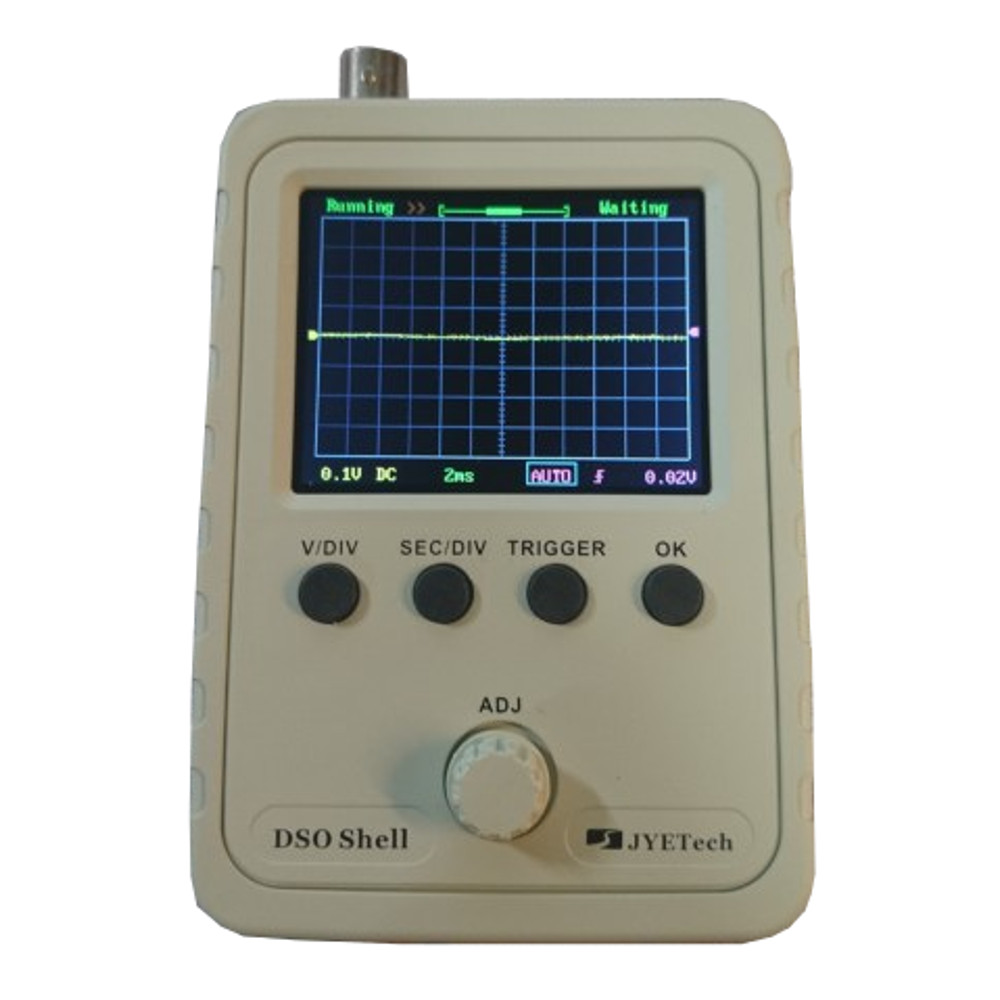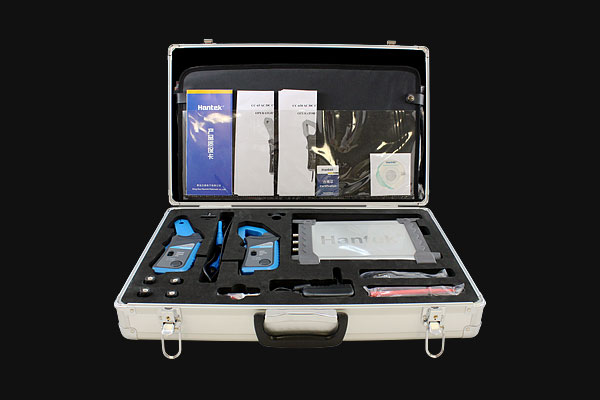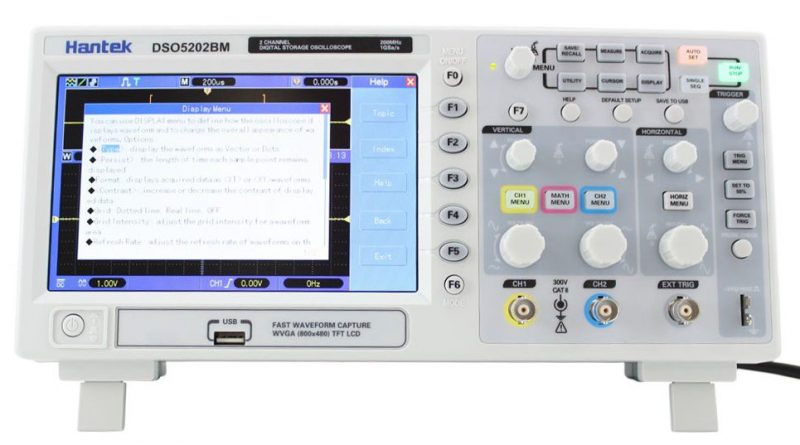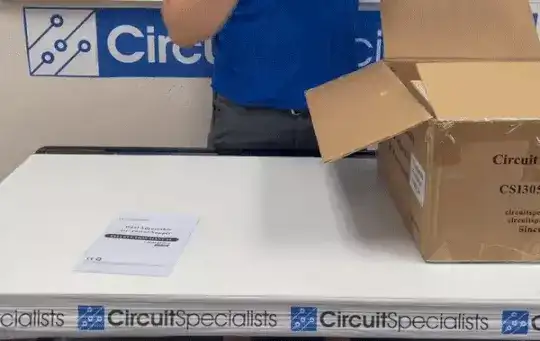How do I Buy an Oscilloscope?
How do I buy an oscilloscope? If you’re asking this question, it means you’re ready for an upgrade.
Multimeters are good but oscilloscopes are a step above. As far as tracking voltage and fixing wonky circuits are concerned, they’re the best at what they do. But before we dive in, just know that an oscilloscope is an investment. A good quality scope can cost a lot, make no mistake, it’s worth it.
We’ll cover the reasons why that is later on but first, a quick definition.
What is an Oscilloscope?
An oscilloscope is a tool used to track changes in voltage over time by displaying electronic signals as waveforms. They’re typically used by electronic technicians and engineers, but believe us when we say there’s a whole host of professions which use oscilloscopes on a regular basis.
There are two types: analog and digital. As you can guess, digital ‘scopes are the more modern model. But both types definitely have their distinct advantages.
We’ll leave it at that, but you can always check what is an oscilloscope, for a more in-depth definition.
Questions to Consider Before You Go Shopping
Before you start scouring the internet for options, we highly recommend knowing what you want from your oscilloscope.
Maybe you’re looking to measure more signals. Maybe you need to accurately measure the time between circuit changes. Or maybe you simply need a more refined system for troubleshooting?
Whatever the case is, it’s a good idea to get all your expectations and requirements down on a piece of paper—or, at the very least, somewhere visible. This way, you can just match the specs of each ‘scope you’re considering against your personal checklist.
Here are a couple questions to think about regarding the oscilloscope you want:
- Where are you going to use this oscilloscope?
- How portable do you need it to be?
- What’s the highest frequency signal you’re planning to measure?
- What are the highest and lowest amplitude signals you’re planning to measure?
- How many signals are you planning to measure in a day?
Once you’ve got most (or all) of the questions answered, you can then dive into the more technical aspects of your intended purchase.
Things to Consider When Buying an Oscilloscope
There are a few things to consider when choosing an oscilloscope. Obviously, different models will have different specs. If you want to choose a ‘scope that best suits your needs, you’ll need to (1) understand what you’re looking at, and (2) know what you’re looking for.
Analog or Digital?
As we mentioned earlier, there are two types of oscilloscopes: analog and digital. Newer oscilloscope models—that is to say, those manufactured after 1995—are usually digital. Very few modern manufacturers still produce analog ‘scopes.
Analog Oscilloscopes
When asking yourself, how do I buy an oscilloscope, at first glance, the analog oscilloscope doesn’t look all that different from digital oscilloscope. In fact, to an untrained eye, it might look similar (if not just a tad bit bigger). The key ferences lie largely in their hardware and performance.
Analog oscilloscopes:
- Display waveforms on a green cathode ray tube (CRT)
- Control X- and Y- axis using a sawtooth wave generator and high-gain amplifiers
- Have a threshold detector as a trigger system (which also resets the sawtooth generator)
- Don’t use pixels and have no defined resolution
- Also come equipped with a vertical channel, a horizontal channel, a time base, and a CRT module
These ‘scopes display waveforms on a CRT screen using high gain amplifiers. The CRT’s deflection circuits cause the electron to sort of ‘sweep’ the phosphor inside the tube’s face to give an accurate reading. They also have two channels—the horizontal and vertical—that come equipped with different features and modes.
- Vertical Channel: an attenuator, a preamplifier, an analog delay line, and a vertical amplifier
- Horizontal Channel: an internal work mode, an external work mode
Digital Oscilloscopes

Digital oscilloscopes, as far as visuals are considered, might look a little sleeker (and a little less intimidating) than analog models. However, as mentioned earlier, physical differences aren’t visibly noticeable at first glance.
Aside from being lighter and more portable, digital oscilloscopes also:
- Use an ADC to sample the input
- Have a small computer and LCD monitor to plot the samples (earlier models use CRT, like analog ‘scopes)
- Capable of mathematical operations like FFT
- Can provide on-screen measurements, storage, and even printing
- Have higher bandwidths than analog ‘scopes
Basically, digital models are more intuitive and responsive. They suit the modern user perfectly due to all the neat little tricks packed in their tiny frame—like single measurement period plotting, on-screen measurement displays, and actual mathematical operations.
Note
Digital oscilloscopes are susceptible to the pitfalls of aliasing artifacts; something analog ‘scopes don’t have to worry about. So, yes, digital ‘scopes do seem to have a lot going for them, but they’re not without their own flaws.
Still, as a first-time buyer of oscilloscopes, you might find digital models easier to use. They’re a little more user-friendly and forgiving than analog ‘scopes (which is something a lot of beginners want). There’s also the whole “not a lot of manufacturers produce analog models anymore” situation we mentioned earlier.
As we mentioned earlier, the differences between analog and digital are more apparent in their performance. But we’ll focus on the main difference between the two ‘scopes for now, which is how they display waveforms.
Analog oscilloscopes show waveforms immediately as they are. Digital oscilloscopes sample the original waveform first before converting it into digital numbers and then displaying it (and storing it).
The good news is that there isn’t that large of a learning curve when transitioning from one type to the other. Once you know how to use an analog oscilloscope, you’ll have no problems using a digital one—and vice versa. The controls and display might be a little different but, overall? They’re both pretty straightforward in terms of operation, and both measure voltage changes like a champ.
Manufacturer
Once you start shopping around for oscilloscopes, you might notice that the brands Tektronix and Keysight (formerly known as Agilent or HP) pop up literally everywhere.
No surprise there; they’re the two biggest giants on the oscilloscope playground. Everyone knows who they are because:
- they’ve been around for years, and
- their quality is off the charts.
You want the best? You get whatever has their brand stamped on the box. However, that stamp doesn’t come cheap. In fact, when it comes to their products, you usually pay top dollar—and then some.
Make no mistake; their ‘scopes are fantastic.
But if you’re on a budget, fret not. Oscilloscope manufacturers have had ample time to step up their game. While you’re starting out, you don’t need the best of the best.
Perfectly serviceable models are available at perfectly affordable prices. Look for brands like Hantek, Siglent, LeCroy, Phillips, and Rhode & Schwartz. These guys have great ‘scopes at pretty reasonable prices.
So how do you buy an oscilloscope? You can check out our online store Circuit Specialists to determine the best oscilloscope for your needs.
Bandwidth
When it comes to choosing an oscilloscope, and asking yourself how do I buy an oscilloscope, bandwidth is arguably one of the most important specs (if not the most important).
It indicates the highest frequency signal the ‘scope is capable of capturing. If the frequencies you typically measure are on the higher end of the spectrum, you’ll want a ‘scope with a decently hefty bandwidth—maybe a couple hundred megahertz or a gigahertz, to start. But if you know your frequencies won’t go beyond several hundred kilohertz, you can definitely settle for a lower bandwidth.
You can find more in-depth reasons regarding bandwidth’s importance to your oscilloscope decision here.
The trick is selecting a ‘scope with a bandwidth that can safely accommodate your needs and give you some wiggle room to grow without wasting your money on performance you won’t need. Bandwidths that are more or less in the middle range (50MHz to 500MHz) are usually safe bets.
Sampling Rate

The second thing to look for when asking yourself how do I buy an oscilloscope is the sampling rate. The sampling rate is what a digital oscilloscope uses to reconstruct the signal. Most scopes have two different sampling rates (also called modes):
- real-time sampling
- equivalent-time sampling (or repetitive sampling)
The activated mode depends on the signal being measured. Generally, real-time sampling works for all kinds of signals. Equivalent-time sampling (also called ETS) only works for stable, repetitive signals.
Also, when it comes to sampling rates, you need to really double-check the specs. Some manufacturers emphasize good sampling rates in order to sell products, but they won’t clarify whether the quoted rate applies to just repetitive signals (which would activate just the ETS) or all signals (which would activate both modes).
You need to make sure the ‘scope you’re planning to purchase can handle the kind of signals you’ll be working with.
Analog oscilloscopes don’t have a sampling rate. Since they already show waveforms as they are, they don’t need to reconstruct the waves. Therefore, they don’t need to sample them. If you don’t want to worry about sampling rate, an analog model might suit you in this regard.
Memory Depth
Memory depth works hand-in-hand with sampling rate. As we mentioned earlier, digital oscilloscopes convert the waveform into numbers by sampling it. Each time they do this, the data is stored in what is called a “buffer memory.”
The size of the buffer memory (or memory depth) determines how long a ‘scope can capture a signal and convert it. If the memory depth is too small for the sampling rate, chances are you’ll only get to use the ‘scope at its full sampling rate a couple times before it hits its limit.
You can read this article for an extensive explanation of the relationship between memory depth and sampling rate which will help you further in answering your question; how do you buy an oscilloscope?
You want to get a higher memory depth in order to get a solid, defined representation of the waveform reading. Again, a little research goes a long way. Here’s a pretty comprehensive guide on what is oscilloscope memory depth, to get you started.
USB Options

USB oscilloscopes have risen in popularity over the past couple years—largely due to the fact that they’re easily the most portable models and the most affordable.
Instead of coming with their own LED or CRT screen, they display measurements using your PC’s screen (and sometimes process measurements using your PC’s processing power, too). This allows manufacturers to save quite a bit on production costs for these models, allowing them to market USB ‘scopes at incredibly low prices.
You can find some pretty decent (and affordable) options at brands like Digilient and OpenScope.
What About Buying Used Oscilloscopes?
Personally (and professionally)? We don’t really recommend second-hand. Oscilloscopes are very sensitive pieces of equipment that need to give precise readings. If anything in its construction is compromised, its performance is compromised, too.
However, buying used oscilloscopes is possible—if not just a little risky. If you do your research and are extremely careful of your choices, you could get a pretty good deal. Here are some cautionary guidelines to help you out:
- Only buy trusted brands. We can recommend Tektronix’s used scopes, HP oscilloscopes, used Lecroy ‘scopes, and used Fluke oscilloscopes.
- Set your expectations. You’re buying a used scope. The chances of it looking fresh and factory-new are very, very slim.
- Used analog ‘scopes rarely have parts available. Fact of the matter is, they’re obsolete. So if your used model is no longer under warranty (and, let’s face it; it most likely isn’t), don’t expect free parts and services.
Here’s a pretty good guide to buying used oscilloscopes. You can find more cautionary guidelines here, too.
Professional Recommendations
- If you’re looking for a great scope at a reasonable price point, the Hantek DSO5202P DSO is a digital model that perfectly hits the sweet spot between “awesome” and “affordable.” It’s got all the goodies, and then some; USB connectivity, 1Gig/S sampling rate, 32 automated measurements, and more. Full specs can be found here.
- Otherwise, the Siglent range seems to be a crowd favorite for fresh new models—especially the 1052DL and SDS2102X. The SDS2102X, in particular, is often highly praised for its innovative system and user-friendly design. Definitely worth a look for first-time oscilloscope users!
- Buying second-hand is possible, but you have to be very, very careful of where and what you’re buying. We can’t stress this enough. Tektronix and HP/Agilent are pretty good brands for used oscilloscopes, but you still need to study the scope in person when making a purchase. It’s not a bargain if the ‘scope breaks after 3 months. We recommend the Hantek handheld oscilloscope.
- Always choose an oscilloscope with a bandwidth higher than the maximum frequency you plan to measure. Anything lower will result in an inaccurate reading.
- While there’s still a place for good ol’ analog oscilloscopes, digital ‘scopes definitely have a little more to offer. They pack a powerful punch in a pretty portable package—something a lot of us on-the-go folks can appreciate. If you know you’ll be lugging your ‘scope around a lot, you might want to lean more towards the digital options.
In Summary…
Here are your takeaway points on how do you buy an oscilloscope:
- PRICE. Oscilloscopes can get pricey so know what you want and prepare accordingly.
- PORTABILITY. If you want something usable and portable, go for a digital oscilloscope. Otherwise, an analog model works just as well.
- ANALOG versus DIGITAL. If you know how to use one, you’ll be able to use the other.
- SCOPES. The three most important? Bandwidth, sampling rate, memory depth.
At the end of the day, the best oscilloscope is the one that delivers everything you need. It’s not something you can afford to regret after purchase (even the used ones) so approach your purchasing decision with as much caution as you can.
Information is the best tool you can give yourself to help you through the selection process. So if you made it through, how do you buy an oscilloscope, excellent work! You’re almost there!
We here at Circuit Specialists hope we helped you answer the question; how do I buy an oscilloscope?
For more great content on circuitry, please check out our blog!


